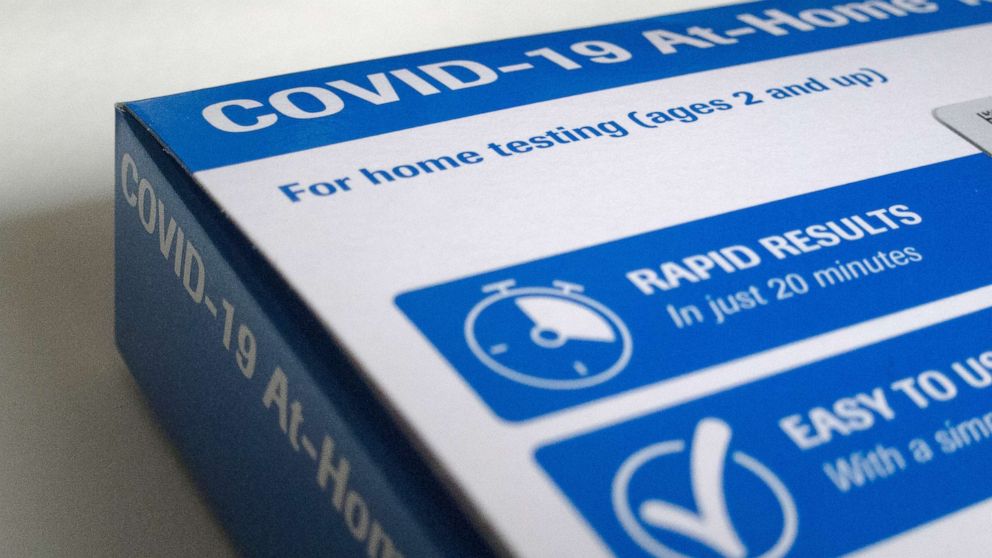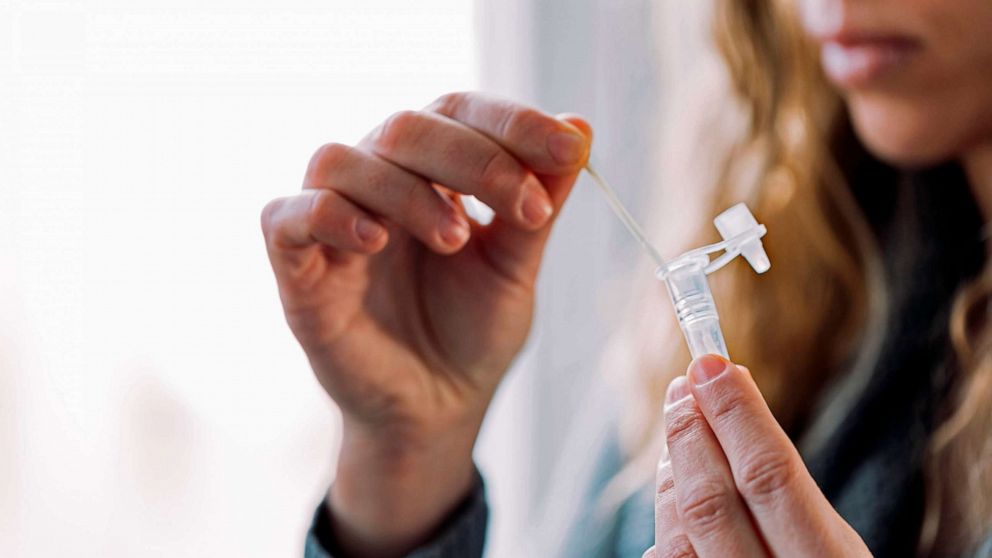
Tens of thousands of Americans have reported a COVID-19 test result on the National Institutes of Health website, launched in November.
The website, MakeMyTestCount.org, allows people to anonymously report the results of any brand of COVID-19 home test.
In updated data provided exclusively to ABC News, 24,000 people have reported their test results to the site. Furthermore, three quarters of results are a positive test and women were more likely to report a test result than men.
“I think there are a larger number of people who are testing for COVID right now than are being reported on this site. So this is just a small raindrop in a big storm,” Dr. Sarah Elisabeth Waldman, an associate professor in the division of infectious diseases at UC Davis Medical Center, told ABC News.
When asked about the discrepancy in women’s and men’s reporting levels, “I don’t think it’s specific to COVID. I think this is more specific to women in general, with higher rates of self-reporting on voluntary sites and other programs,” she added. .

Photo illustration of a government-issued COVID-19 home test kit.
Michael Bocchieri/Getty Images, ARCHIVE
Public health experts said it’s great that there’s a place for people to import test results, and that more people are doing so than expected – but questions remain about self-reported data that can give scientists a better idea. from where the virus is spreading and who is most affected.
They also warned that there could be a bias in who is inclined to report test results.
“The fact that we’re seeing three out of four tests reported as positive definitely doesn’t mean that three out of four people are actually positive. It probably means that people are more inclined to report a positive result than a negative one.” Andrew Weitz, Ph.D., NIH program director and co-leader of the project, told ABC News.
But that doesn’t mean reporting test results at home isn’t beneficial to health officials. In fact, the more results that are provided, the clearer the understanding of COVID in the community.
“The absolute numbers may or may not tell the whole story, but what I think the public health community will begin to better understand is how trends can help us understand this story,” Dr. Krishna Juluru, an NIH Chair of Innovation Fellow and co-leader of the project, told ABC News.
Experts also urged the public to report home test results, regardless of whether they are positive or negative, to provide health officials with a better sense of what is happening in the community.
“Without the negatives, we don’t have a good idea of what the overall positivity rate might be and where we’re seeing really significant increases,” Matthew Binnicker, Ph.D., director of the laboratory of clinical virology at the Mayo Clinic, told ABC News . “We need to be able to determine where COVID is most prevalent, where we are experiencing an increase [and] We need to have the total number tested, including positives and negatives, to really get a good sense of that.”
The NIH is also launching a pilot program in a Pennsylvania county that will provide free COVID-19 healthcare services entirely virtually. Up to 8,000 eligible residents are expected to participate in the program.
According to the program, a patient sick with COVID-19 could receive rapid home tests, telehealth sessions and home treatments like Paxlovid without leaving home.
“It’s largely focused on a home setting, but we also allow individuals options, if they want to get tested at a local community centre, after a telehealth appointment, if they want to go and pick up their medication from a local pharmacy, we allow that too” , said Juluru.

A woman placing a cotton swab in the antigen test extraction tube
Cris Cantã³n/Getty Images, FILE
As antiviral drugs such as Paxlovid cannot be taken with other medications, patients must consult a physician before any treatment is sent home.
There are plans to expand the program to several more sites throughout the year.
“This is a pilot program, so we’re doing this in the spirit of learning as much as possible,” Weitz said. One of the NIH scientists’ main goals is “to understand what’s working, what’s not, and how we can improve things if there’s a larger scale rollout of this program,” he added.


0 Comments